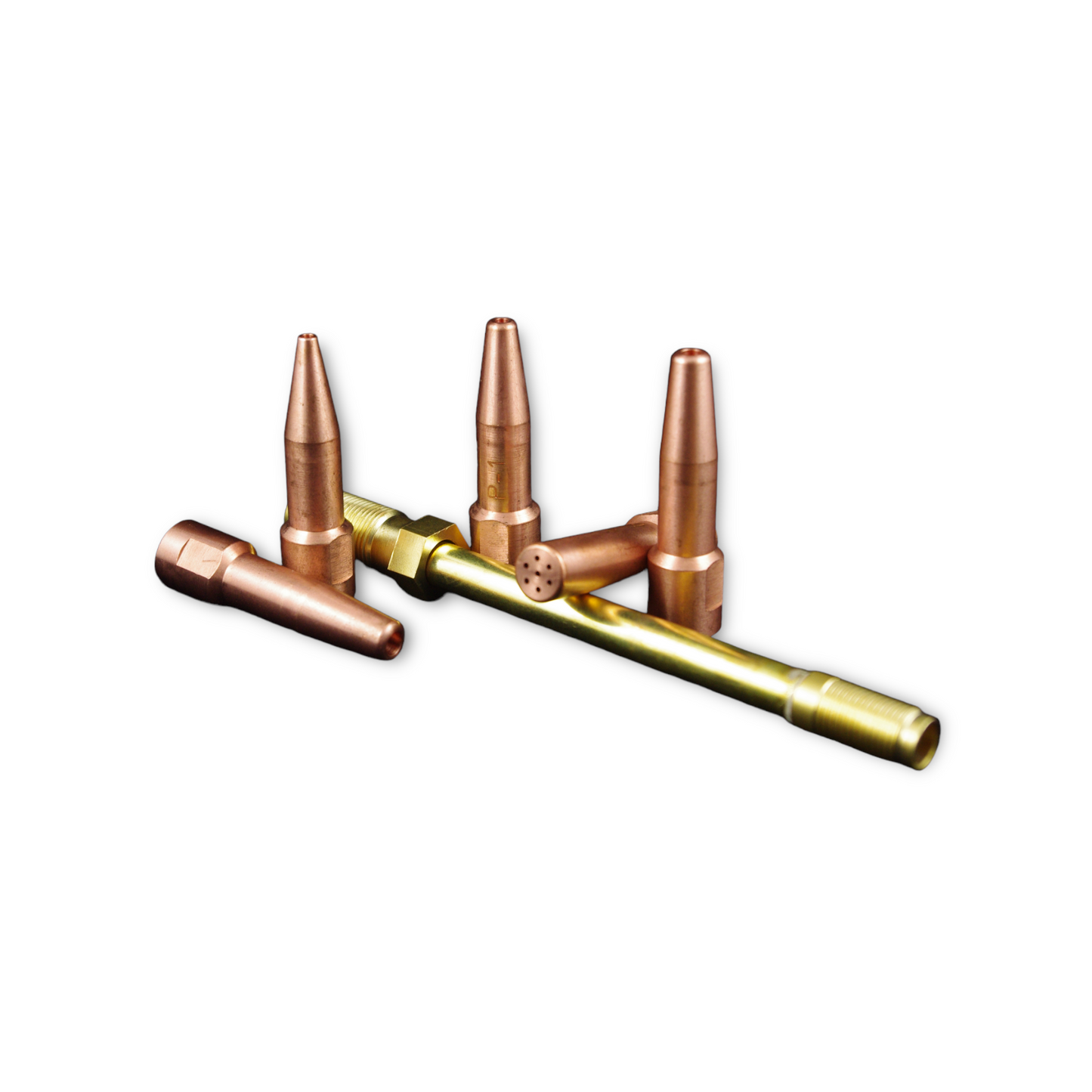
WELDING AND CUTTING WITH PROPANE BASED FUELS WITH THE DHC 2000 TORCH
Cobra Torches has designed a complete set of propane welding and heating tips for the DHC 2000 welding and cutting torch. These tips will also fit the Henrob and Dillon torches.
There are 4 propane welding tips (.5, 1, 2, 3). These tips are identified with the letter P for Propane and the number size to follow. For example if you see a P-2 stamped on a tip it will be a propane fuel tip and a size 2 orifice. There is also one propane heating tip available that is to be used during cutting operations. The propane heating tip (PH-2) has multiple holes on the end to increase heating due to the lower BTU’s produced by propane based fuels.
Lighting the torch when using Propane based fuel
Set your regulator at 3 psi and your Oxygen regulator at 15 (a 1:5 ratio). Due to the properties of propane, lighting a propane based flame is a bit trickier than lighting an acetylene-based flame. To properly light it (and maintain the flame at the tip) do the following: 1) lay the welding tip at a 45 degree angle on the surface of the work piece and slightly open the fuel and oxygen valves on the torch 2) light the torch tip with a striker. 3) once lit, you may need to adjust both the fuel and oxygen valves (on the torch) to get the flame to come back to the end of welding tip.
Welding and Cutting with propane based fuel
Cutting steel with a propane based mixture (and the propane heating tip) will yield the same results as cutting with an acetylene based mixture (see below). However, there are a few pros and cons to welding with propane. Aluminum, copper, and most nonferrous materials will weld just as good if not better than with acetylene because the propane is cleaner and does not include carbon in its composition. This lack of carbon however makes it less than ideal for welding steel. With a propane based flame the steel welding puddle will not flow smoothly, so the flame needs to run a little richer. As a result you end up with a much harder weld and the need to anneal the welded area to keep it from failing under load. The lack of carbon in propane also prohibits it from being used to weld certain alloys, i.e. Stainless Steel. For these reasons, Cobra Torches Inc does not recommend using propane based fuels to weld ferrous metals.
The neutral flame temperature of propane based mixture burns approximately 1200 degrees cooler than an acetylene based mixture. When welding or cutting with propane fuel you will have to increase your tip size (usually one tip larger than what you would use with acetylene). For example, when cutting thin body panel with propane gas connect the P-1 to the shank and connect the brass .5 tip (comes with the standard kit) to the undercutter attachment.
For heavy cutting of mild steel up to 1” use the standard copper tip on the cutting attachment, and the PH2 heating tip on the shank. This tip is designed to increase the Btu’s of the heating flame so you can cut heavier steel at the same rate as acetylene. The PH2 tip is also good for heating materials of all kind.
